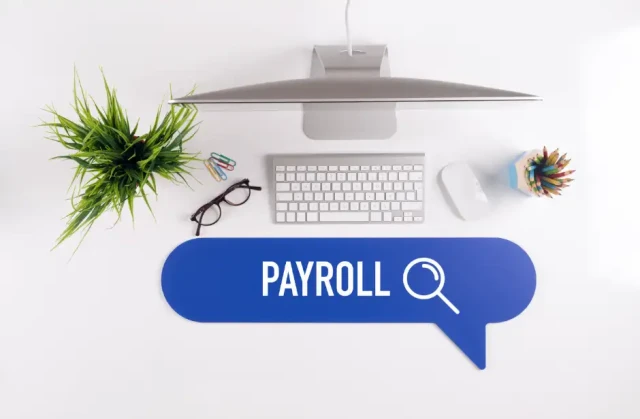Migrating to a new payroll system is a big decision for any business. Transitioning requires careful planning and timing to comply with regulations and improve efficiency. Understanding why and when to migrate your payroll system is crucial for success. By doing so, you can take advantage of new capabilities and benefits that will help your business operations run more smoothly.
The Need for Migration
Businesses must move their payroll systems to a new platform for various reasons. Here are some signs that indicate the need for such a migration:
1. Outdated System: If your organisation's payroll system cannot keep up with the changing compliance requirements or is not adaptable to new tax laws and government regulations, it's necessary to migrate to a new system. It's essential to comply with the rules; not updating your payroll system can lead to penalties and legal issues and harm your organisation's reputation.
2. Business Growth: As your business grows, it requires more advanced payroll capabilities to manage its complexity. For instance, when businesses expand their operations globally or hire more employees, payroll processing becomes more complicated. If the current payroll system cannot handle multiple currencies, different tax laws, or a large volume of transactions, it indicates the need for a more sophisticated management solution.
3. Software Development: As technology advances, we have more opportunities to streamline our systems and make them work together seamlessly. If you're using a payroll system that doesn't communicate with your other systems or requires manual data entry, you're likely experiencing inefficiencies and a higher risk of errors. Modern payroll solutions offer automation, integration with other systems, and real-time data access, making upgrading and taking advantage of these benefits significant.
4. Poor User Experience: When a system is challenging to use, it can cause problems for the people using it. When this happens, it might be a good idea to switch to a new system that everyone can use. That way, the people who manage the payroll and those who get paid can have a better experience.

Planning Your Migration to RosterElf
Having a clear plan is essential when you're getting ready to switch to RosterElf. This guide will show you the crucial steps for planning your payroll migration to RosterElf. It will make the process easier and help keep things running smoothly.
Pre-Migration Planning
- Assess Your Current System: Review how you manage payroll and create schedules. Find out what's working smoothly and what could be enhanced. This will give you insight into the functions you should look for in RosterElf.
- Set Clear Objectives: Define what you want to achieve with RosterElf, such as reducing errors, eliminating time-consuming process, or improving staff communication.
- Choose a Migration Team: Select a team responsible for managing the migration process. This should include members from HR, payroll, and IT departments.
Data Preparation
- Audit Your Data: Review and clean up your payroll and employee data. Ensure accuracy in employee names, pay rates, and employment terms.
- Backup Data: Before migrating, back up all your existing data collection to prevent any loss during the transition.

RosterElf Setup
- Account Setup: Create your RosterElf account and set up your company settings, including pay rates, roles, and permissions.
- Employee Onboarding: Import your employee data into RosterElf. You can utilise RosterElf’s bulk upload feature to streamline this process.
- Training: Schedule training sessions to familiarise your team with RosterElf’s features and interface. RosterElf offers training resources and customer support to assist your team.
Migration and Testing
- Pilot Migration: Conduct a pilot migration with a small, controlled group of employees. This will help you identify any issues before full-scale migration.
- System Integration: Integrate RosterElf with your other business systems, such as HR and accounting software, to ensure seamless data flow.
- Testing: Perform thorough testing of payroll processing, rostering, and reporting features.

Go-Live and Monitor
- Go-Live: Once testing is complete and you’re satisfied with the setup, proceed with the complete migration.
- Monitor and Support: Closely monitor the system for any issues in the initial weeks. Provide ongoing support and training to staff to address any questions or concerns.
- Gather Feedback: Ask people for feedback to see how you can make things even better. Always look over and improve your ways to make the most of RosterElf.
When you follow this step-by-step plan for moving your payroll to RosterElf, you'll ensure everything goes smoothly and prepare for better payroll and scheduling at your workplace.
What Are the Common Migration Challenges and Solutions
Moving payroll and employee information, connecting systems, and updating can be challenging. Let's look at the migration challenges and solutions:
Common Payroll Migration Challenges
- Data Integrity and Accuracy: Ensuring the correctness and completeness of payroll data during migration.
- Solution: Validate and clean the data before moving. Use tools that can help you find and correct any errors.
- Regulatory Compliance: Payroll migration can get complicated when you follow different state rules.
- Solution: Get help from legal and tax experts to know what you need to do to follow the rules in your area. Make sure to include these things in your migration plan.
- System Compatibility: Ensuring the new payroll system is compatible with existing HR and financial systems.
- Solution: Conduct thorough compatibility tests and choose a payroll solution with flexible integration capabilities.
- Employee Training and Adaptation: Employees must adapt to the new system, which can disrupt productivity.
- Solution: Offer comprehensive training sessions and provide resources for employees to learn about the new system.
- Data Security and Privacy: Protecting sensitive payroll information during and after migration.
- Solution: Put strong security measures such as encryption and access controls and obey the data protection rules.
Best Practices for Payroll Migration
- Detailed Planning: Create a detailed moving plan with schedules, people in charge, and backup plans.
- Stakeholder Engagement: Include everyone involved in the migration process, like HR, finance, IT, and employees, right from the start. This way, you can gather their ideas and make sure everyone knows what to expect.
- Phased Rollout: Think about migrating stages and testing each part before doing the whole thing to find and fix problems early on.
- Post-Migration Support: Continue to offer help and provide tools to solve any issues and ensure the new system runs without any problems.

What Are the Benefits of Migrating to RosterElf
Migrating to RosterElf can significantly streamline your payroll calculations and scheduling processes. Here are some of the key benefits and advantages:
- Simplified Scheduling: RosterElf provides an easy-to-use platform that simplifies scheduling tasks. This platform allows you to easily create, edit, and manage schedules without any manual hassle.
- Time-saving Features: This software can help managers save time by generating schedules automatically based on staff availability and business process needs. It simplifies the process of workforce management and reduces the need for manual scheduling.
- Improved Payroll Accuracy: By migrating payroll to RosterElf, you can eliminate human errors that come with manual data entry. The system ensures employees are paid accurately and on time by tracking hours worked and applying the correct pay rates.
- Enhanced Communication: RosterElf's mobile app helps managers and employees communicate better. It allows employees to access their schedules and request time off and managers to approve and update schedules in real-time.
- Cost Reduction: Efficient staff scheduling and reduced administrative tasks can help businesses save on operational costs. RosterElf can help businesses avoid over or understaffing, which can result in unnecessary labour expenses.
- Compliance Management: Our platform ensures payroll compliance with labour laws by automatically tracking breaks, overtime, and other factors. This helps reduce the risk of legal issues and penalties for businesses.
- Data-Driven Decisions: RosterElf offers valuable insights and analysis on staff performance, labour costs, and scheduling trends. This helps businesses make informed decisions to boost productivity and efficiency.

Improving your payroll services is essential for your business' productivity and adherence to regulations. Although beginning the payroll migration process may seem overwhelming, the advantages in the long run outweigh the initial challenges. This step simplifies payroll operations and establishes a more secure and lawful financial management system.
RosterElf simplifies your payroll process, making migration seamless and hassle-free. Dealing with payroll reports can be challenging, but we've got your back with personalised help to make the process easier.



